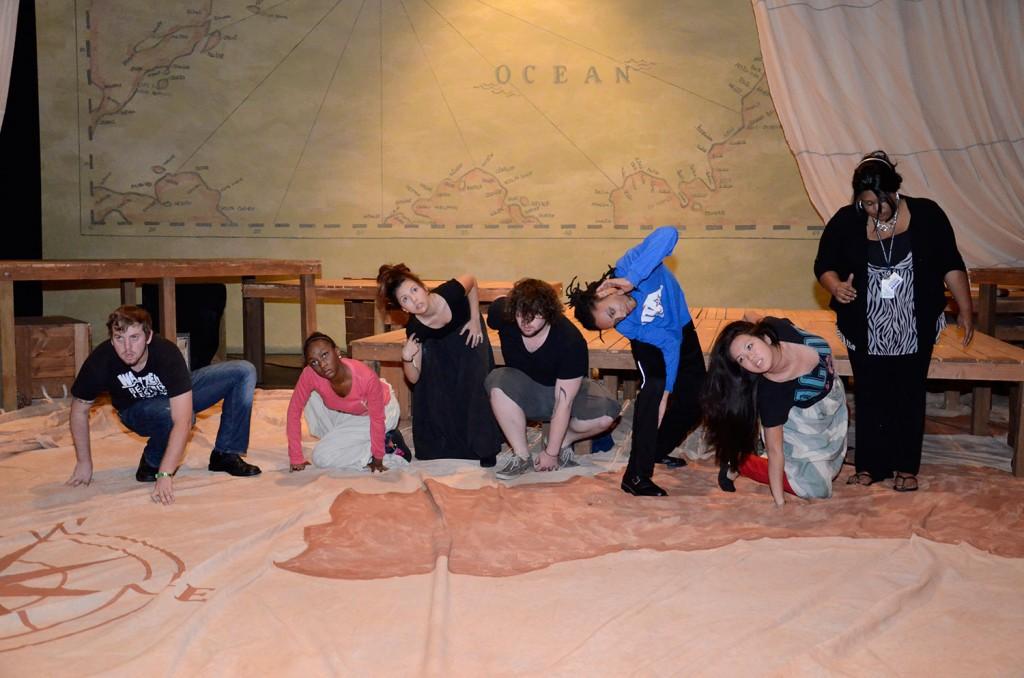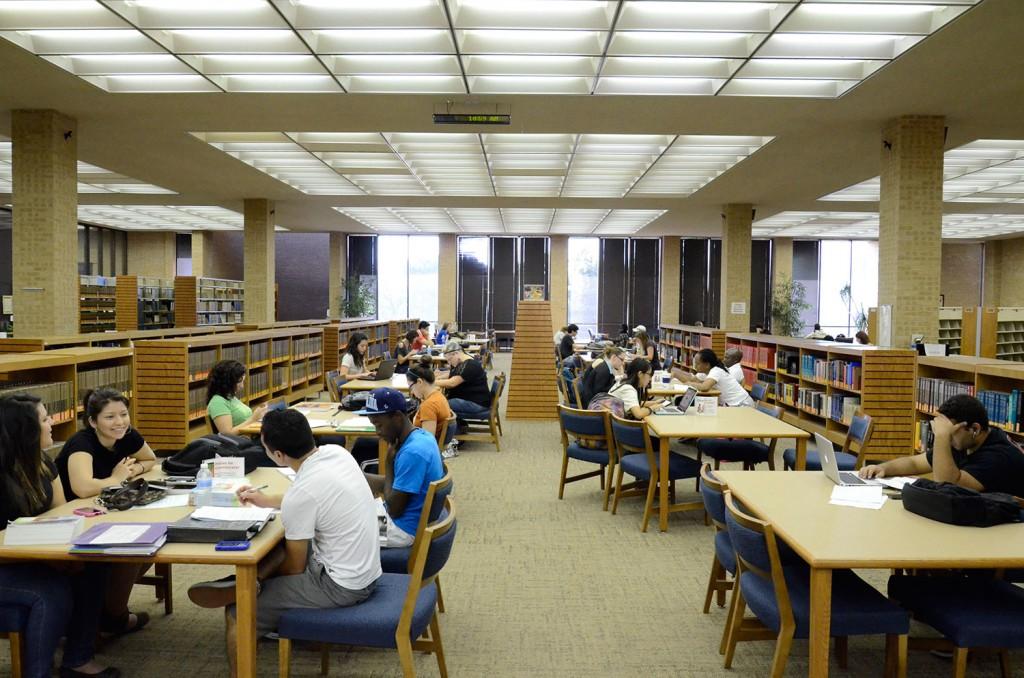By Karen Gavis/managing editor
Photographs taken along historic Route 66 can be seen in the SE library this month.
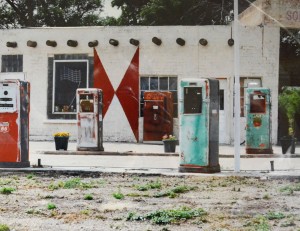 The colorful exhibit Road Trips is intermingled with travel-related books offering road-trippers as well as armchair travelers a visual and literary combination.
The colorful exhibit Road Trips is intermingled with travel-related books offering road-trippers as well as armchair travelers a visual and literary combination.
SE adjunct English instructor Gregory Bade teamed with librarian Jo Klemm to encourage students to check out more library books. Bade said his previous exhibit of Texas landmark photography from places like Big Bend and Palo Duro Canyon spurred a discussion about the current exhibit, which Klemm said has moved more books.
“Mr. Bade’s camera captures the essence of the road trip, and each photo brings to mind a piece of literature where characters have taken to the open road,” Klemm said in her library blog.
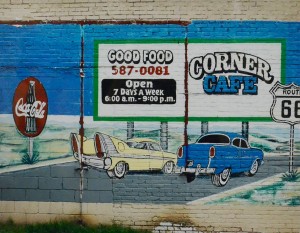
Photos by David Reid/The Collegian
SE student Babatunde Ogunji said Bade’s photos allow people to see how things have changed and make him want to visit the places so he can get a feel of how things used to be.
“And the terrain, everything is so natural, [there are] no buildings yet,” he said. “It all goes back to technology and how much we’ve advanced throughout the years.”
The accompanying selection of books like John Steinbeck’s The Grapes of Wrath and Larry McMurtry’s Lonesome Dove gives library patrons a chance to make literary connections with the photography. For example, Pony Bridge in Bridgeport, Okla., is linked to the movie version of The Grapes of Wrath.

“The scene where Grampa dies and is buried was shot near the west end of this bridge,” Bade said. “If you watch the movie carefully, you can see the Canadian River plain and the Pony Bridge in the distance.”
One artifact inside a glass display case filled with Route 66 memorabilia is a chunk of roadway that Bade rescued from a road crew’s debris pile. Workers had torn up and were replacing a section of Route 66, which allowed Bade to score part of the center stripe. Sharing the case are postcards and a photograph of Pop’s Restaurant in Arcadia, Okla., whose giant soda bottle signage cannot be missed. Pop’s has more than 600 varieties of soda, Bade said.
Sitting on top of the case is a framed information graphic showing that a trip along the entire historic route in a 1972 Ford Mustang would have chugged 220.8 gallons of gas and cost $437.62. But today, the same trip in a 2012 Mustang would use 122.6 gallons of gas for a total of $441.92.
“So there’s no reason not to go,” Bade said.
A few black-and-white photos are actually photographs of photographs that Bade took while visiting a museum. In one, workers are building the route, and in another, a vehicle is parked along the roadside while a man sits on the ground casually strumming an instrument.
“It’s what people did along the way,” Bade said.
Other photos capture colorful images like vintage gas pumps and neon motel signs, store side murals and a big blue whale. Bade said although the whale tourist attraction is not listed on the historical register, it is a historical place that served as a landmark.
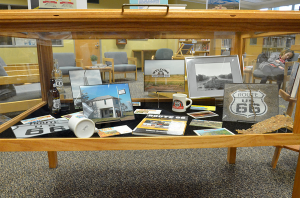
Photos by David Reid/The Collegian
“When you have a family in a ’55 station wagon with no air conditioning, you are looking for a place to stop,” Bade said.
Bade and his wife traveled all of Texas’ Route 66 last year.
“We didn’t really want to do that again,” he said. “So this time, we did all of Route 66 in Oklahoma.”
Many photographs in the exhibit were taken on the Oklahoma trip, but others are representative of other road trips, Bade said.
Resting on top of the display case, a statement by Bade reads, “Road trip literature often concludes with the main character reaching the destination, but some pieces, like On the Road, emphasize that the journey itself is the conclusion.”


























